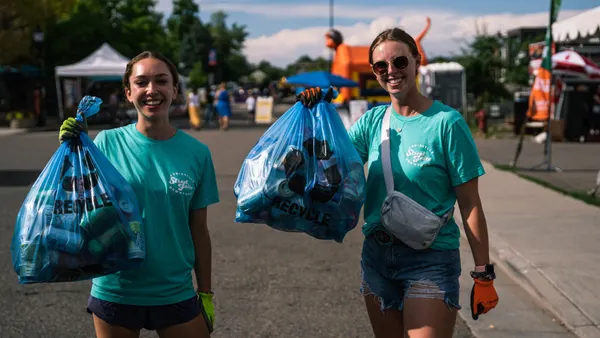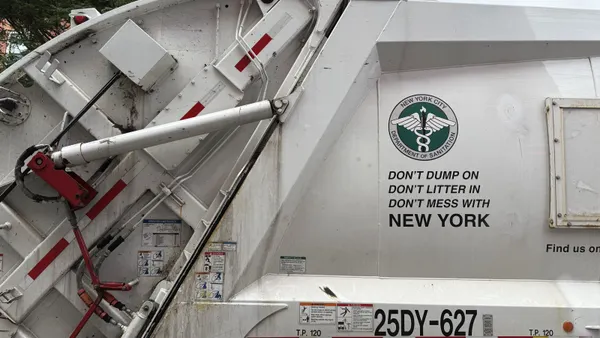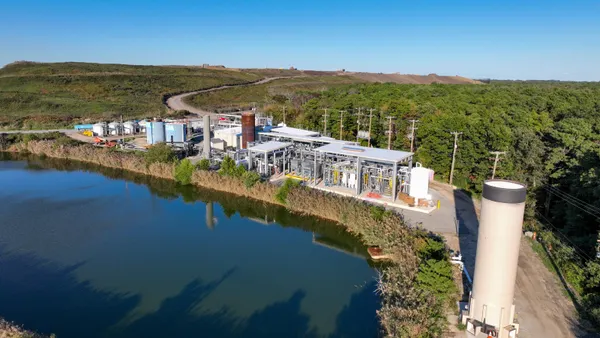Dive Brief:
- According to new results from a survey conducted by the Ad Council, the Save the Food campaign appears to be delivering results since it launched in April 2016. The survey found that general awareness of food waste has increased from 51% to 54% during that period. These survey results, from about 9,800 respondents, were presented during a June 29 Environmental Protection Agency webinar.
- Awareness and action around the issue notably increased among people who saw the ads. 64% of people discussed wasting less food with family and friends, as compared to 38% who hadn't seen the ads. 59% of people sought more information about food waste, compared to 28%. 87% of people said they'd reduced the amount of food waste they generated in the past six months, compared to 70%.
- The Ad Council attributed much of this success to the fact that they'd received $35.5 million in donated media through a wide range of campaign placements. This included numerous appearances in television, print, online media, radio and outdoor displays. Notable examples included $787,000 in donated media from the Food Network, including a month-long PSA and an appearance on "Chopped Junior," plus $200,000 in donated media via Facebook ads. Amazon's Alexa app has even been programmed to give food storage and waste advice.
Dive Insight:
Save the Food ads — especially its strawberry video — have become hard to miss over the last year. Spearheaded by the Natural Resources Defense Council (NRDC) and the Ad Council, this campaign has been working to drive home the waste reduction message to consumers by showing them the benefits to their lives on a number of fronts. According to the webinar, the campaign has been particularly focused on moms and millennials. Moms are still considered "food gate-keepers" in many households and millennials are seen as more socially-aware, but too busy or transient to establish good food habits. Figuring out how to reach this target audience without it seeming like they were being blamed for their behavior and limited from being hospitable to guests or trying new foods posed a challenge to the Ad Council.
This large-scale social experiment has taken a number of forms, including the aforementioned media placements, but one of the most successful so far has been giving consumers practical advice. Among all of the options on Save the Food's website, the page on food storage was said to be the most popular. Like the ongoing date labeling discussion, this often comes back to consumer confusion that can lead to easily avoidable waste. This is one of many reasons that updating the current patchwork of regulations around food labeling and donation is seen as a top priority for advocates in the 2018 Farm Bill.
A representative from the EPA echoed these sentiments during the webinar, saying that reducing waste or diverting it for consumption is all part of the recovery hierarchy. While proposed federal budget cuts may put the agency's efforts to reduce food waste 50% by 2030 at risk, the momentum will still continue at the state and local level. The webinar also featured presentations about food waste campaigns in Twin Cities, MN and San Diego —both in states with diversion mandates — that were utilizing Save the Food campaign materials. The NRDC is also planning to announce a new version of its 2012 "Wasted" report, seen as a seminal piece of the current food waste discussion, later this year.
For any in the waste industry that still view this as a tangential advocacy issue, the growing prominence and early results of Save the Food may make them think otherwise. Though more cities are beginning to do it, curbside organics collection can still be financially challenging without the right infrastructure and food waste reduction makes it less necessary. As seen in Los Angeles, where Republic Services recently bought a refrigerated truck for a local rescue organization, new contract terms could also begin requiring companies to become more engaged in food recovery too.













